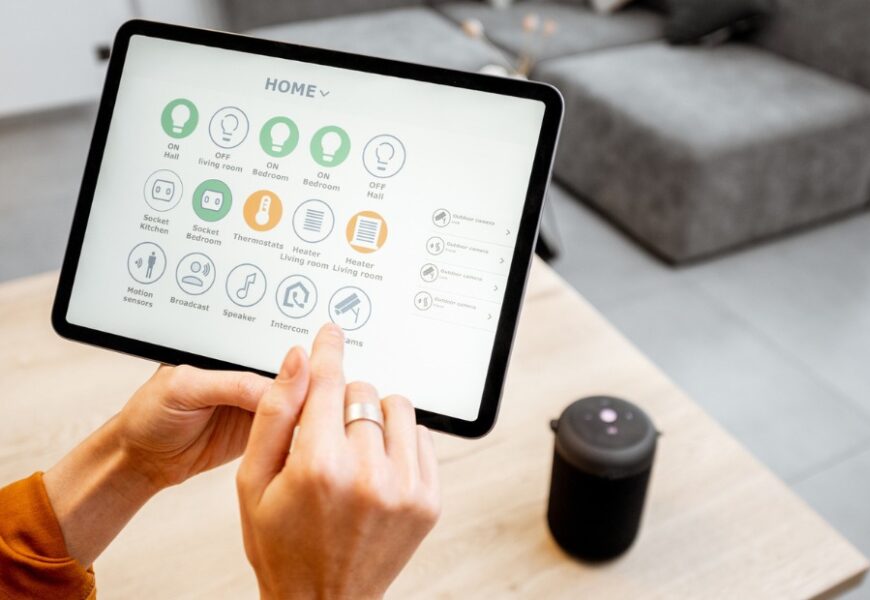In our fast-paced world, finding ways to make everyday tasks more manageable is always a win. One of the most effective ways to streamline your routine and increase convenience is by integrating smart home devices into your living space. These devices offer automation and control that can transform your home into a more efficient, comfortable, and secure place. Here’s how you can leverage smart home technology to simplify your life.
The Power of Smart Home Automation
Smart home devices are designed to automate tasks, provide remote control, and enhance the overall functionality of your home. By connecting to your Wi-Fi network and often to each other, these devices can be managed via smartphone apps, voice commands, or automated schedules. Here are some of the key benefits of smart home automation:
- Convenience: Control lights, locks, thermostats, and more from your smartphone or through voice commands.
- Energy Efficiency: Smart thermostats and lighting systems can reduce energy consumption by optimizing usage based on your habits.
- Security: Smart security cameras, doorbells, and locks enhance the safety of your home with real-time monitoring and alerts.
- Comfort: Automated climate control and smart speakers can create a more comfortable living environment tailored to your preferences.
- Time-Saving: Automating routine tasks frees up time for more important activities and reduces the mental load of managing a household.
Key Smart Home Devices to Consider
- Smart Thermostats Devices like the Nest Thermostat or Ecobee can learn your schedule and adjust temperatures automatically, saving you money on heating and cooling bills. They can also be controlled remotely, allowing you to set the perfect temperature before you arrive home.
- Smart Lighting With systems like Philips Hue or LIFX, you can control your lights from your phone or with voice commands. Set schedules, adjust brightness, and even change colors to suit your mood or activities. Smart lighting can also be programmed to turn off when you leave the house, saving energy.
- Smart Security Cameras and Doorbells Enhance your home security with devices like the Ring Video Doorbell or Arlo cameras. These devices offer real-time video feeds, motion detection alerts, and two-way communication, allowing you to monitor your home from anywhere.
- Smart Locks Smart locks such as August or Schlage allow you to lock and unlock your doors remotely, provide temporary access codes for guests, and receive notifications when someone enters or leaves your home. This adds an extra layer of security and convenience.
- Smart Plugs and Power Strips Devices like the Wemo Smart Plug can turn any standard appliance into a smart device. Control your coffee maker, lamps, or fans with your phone or set schedules to automate their operation.
- Smart Speakers and Assistants Amazon Echo, Google Nest Hub, and Apple HomePod serve as the central hub for many smart home systems. These devices allow you to control other smart devices with voice commands, set reminders, play music, and get answers to questions.
- Smart Appliances Modern smart appliances, including refrigerators, washing machines, and ovens, can be controlled remotely and often come with features that enhance their functionality. For example, a smart refrigerator might notify you when you’re running low on groceries.
Setting Up Your Smart Home
- Choose a Platform Decide which smart home ecosystem you want to use, such as Amazon Alexa, Google Assistant, or Apple HomeKit. This will ensure compatibility and seamless integration between devices.
- Start Small Begin with a few key devices that will have the most impact on your daily life, such as a smart thermostat and smart lights. You can expand your system over time as you become more comfortable with the technology.
- Install and Configure Follow the manufacturer’s instructions to install and configure each device. Most smart devices are designed for easy setup, often requiring only a smartphone app and a Wi-Fi connection.
- Create Routines and Schedules Use your smart home app to create routines and schedules that automate tasks. For example, set your lights to turn on at sunset, or your thermostat to lower the temperature when you leave for work.
- Use Voice Commands Take advantage of voice assistants to control your devices hands-free. Commands like “Alexa, turn off the living room lights” or “Hey Google, set the thermostat to 72 degrees” can make managing your home even more convenient.
Maximizing the Benefits
- Regular Updates: Keep your devices updated with the latest firmware to ensure they run smoothly and securely.
- Integration: Look for ways to integrate devices to work together. For example, a motion sensor can trigger lights to turn on when you enter a room.
- Energy Monitoring: Use smart plugs and power strips to monitor energy usage and identify opportunities to save on electricity bills.
Conclusion
Smart home devices offer a convenient and efficient way to manage your household tasks. By automating routine activities and providing greater control over your environment, these devices can help you save time, reduce stress, and create a more comfortable living space. Start exploring the possibilities of smart home automation today and experience the benefits of a truly connected home.











